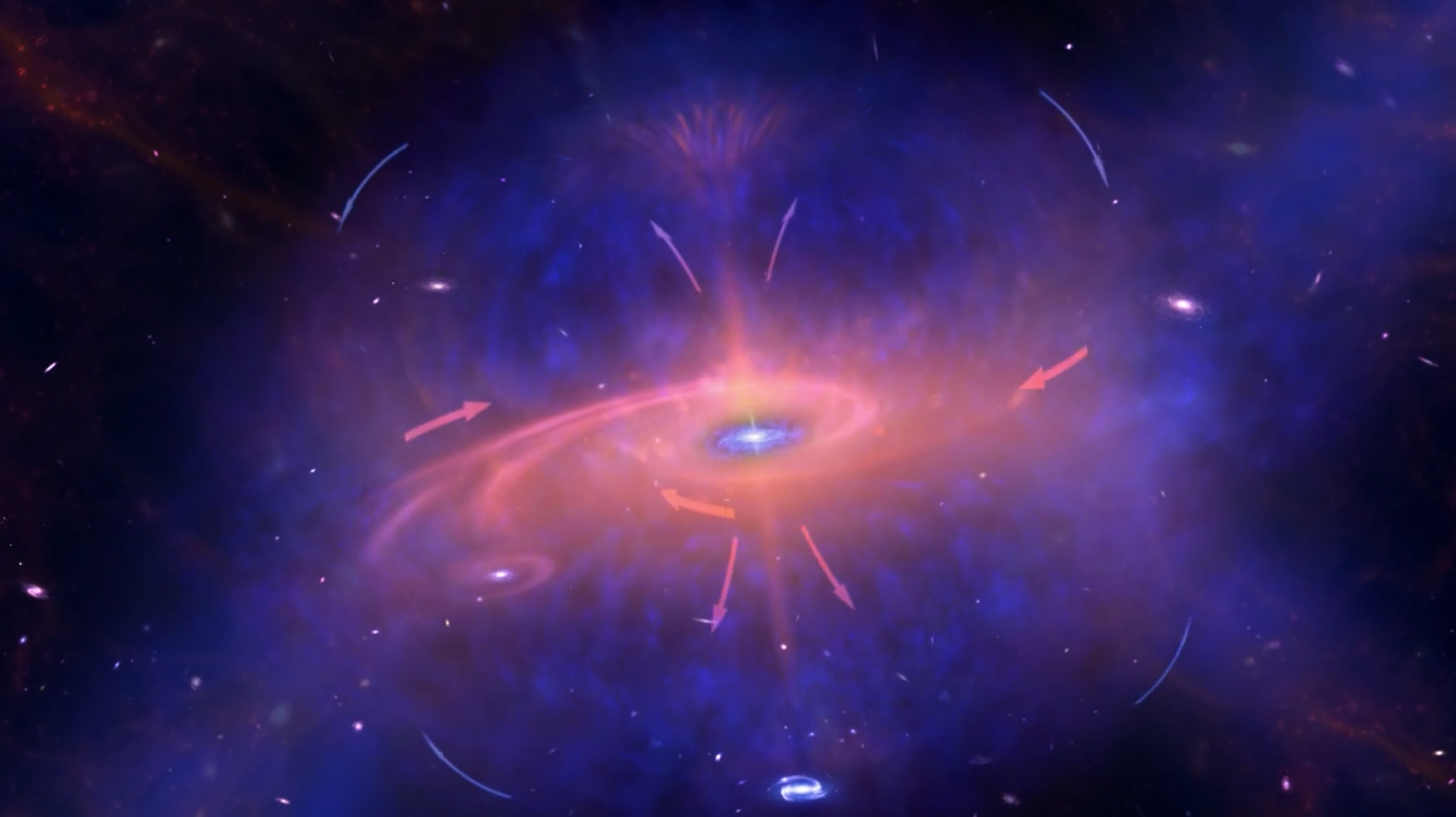Maunakea, Hawaiʻi – Astronomers have found direct evidence showing ancient galaxies were able to sustain star formation by recycling gas from previous stars to birth new generations of stars. This recycled gas could have been enough to supply all the material needed for galaxies in the early universe to grow, shedding new light on the evolution of galaxies and stars.
The findings, which include data from two Maunakea Observatories on Hawaiʻi Island – W. M. Keck Observatory and Subaru Telescope – are published in the journal Science.
Gas provides the material galaxies need to form new stars. When stars die in supernova explosions, they can expel gas out of a galaxy. To continue forming stars, a galaxy requires a steady supply of gas streaming into it. But it has been unclear if star formation is driven by a supply of pristine new gas, which consists mostly of hydrogen with a little helium – among the lightest elements in the universe – or if galaxies are able to recycle the gas from previous generations of supernovae, which would contain heavier elements produced by nuclear fusion in stars.
To answer this question, an international team of researchers led by Tsinghua University snapped a direct image of MAMMOTH-1, a massive nebula in a galaxy cluster that existed 11 billion years ago.
Using Keck Observatory’s Keck Cosmic Web Imager (KCWI) and Subaru Telescope, the team detected signs of hydrogen, helium, and carbon extending out to 300,000 light-years around MAMMOTH-1. The ratios of the elements are similar to what is seen in the Sun today; this is surprising for such an ancient protogalaxy, whose composition is expected to more closely resemble the pristine state of new gas.
Artist’s animation depicting direct observations of recycled gas spiraling into the MAMMOTH-1 protogalaxy, fueling more star formation. Credit: Tsinghua University
The team was also able to map the motion of the gas, which showed the gas enriched with heavy elements is flowing back into the galaxy, delivering about 700 times the mass of the Sun in recycled gas each year. This amounts to much more than what is needed to fuel the star formation rate seen in MAMMOTH-1, which is about 81 times the mass of the Sun each year, thus indicating that the recycled gas alone is enough to sustain star formation in the protogalaxy.
“Our observations give a first hint that recycled inflows might be an ubiquitous supply mechanism for massive star-forming galaxies in the early universe,” said Zheng Cai of Tsinghua University, the Principal Investigator of this study and co-author of the paper.
ABOUT KCWI
The Keck Cosmic Web Imager (KCWI) is designed to provide visible band, integral field spectroscopy with moderate to high spectral resolution formats and excellent sky-subtraction. The astronomical seeing and large aperture of the telescope enables studies of the connection between galaxies and the gas in their dark matter halos, stellar relics, star clusters, and lensed galaxies. Support for this project was provided by the National Science Foundation, Heising-Simons Foundation, and Mt. Cuba Astronomical Foundation.
ABOUT W. M. KECK OBSERVATORY
The W. M. Keck Observatory telescopes are among the most scientifically productive on Earth. The two 10-meter optical/infrared telescopes atop Maunakea on the Island of Hawaii feature a suite of advanced instruments including imagers, multi-object spectrographs, high-resolution spectrographs, integral-field spectrometers, and world-leading laser guide star adaptive optics systems. Some of the data presented herein were obtained at Keck Observatory, which is a private 501(c) 3 non-profit organization operated as a scientific partnership among the California Institute of Technology, the University of California, and the National Aeronautics and Space Administration. The Observatory was made possible by the generous financial support of the W. M. Keck Foundation. The authors wish to recognize and acknowledge the very significant cultural role and reverence that the summit of Maunakea has always had within the Native Hawaiian community. We are most fortunate to have the opportunity to conduct observations from this mountain.


